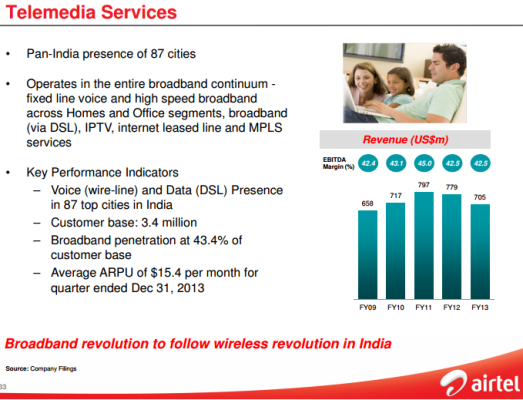Indian mobile service provider Bharti Airtel has increased its fixed-line broadband tariffs by up to 40 percent in certain plans.
The increase is in tariff will be effective from April 1.
According to TRAI data, the state-owned BSNL, a loss making telecom operator, has 68.9 percent market share in the Indian broadband market in 2013 November. The second largest operator is Bharti Airtel with 9.1 percent share, while state-run telecoms MTNL has 7.6 percent market share in the Indian fixed line broadband market. India has 14.47 million wireline broadband subscribers.
Also read: India telecom: broadband market share in 2013 November
Bharti Airtel is increasing the tariff at a time when rivals are offering special schemes to attract fixed broadband customers.
In August 2013, Tata Docomo (Tata Teleservices) announced free tablet worth Rs 40,000 with costly broadband plans. For this scheme, broadband users need to take 100 Mbps annual plan to get a Rs 40,000 priced tablet.
Also read: Tata Docomo offers Rs 40,000 free tablet with costly broadband plans
Airtel telemedia business – including voice (fixed-line) and data (DSL) business has an ARPU of $15.4. It is present in 87 cities across the country with a customer base of 3.4 million with 43.4 percent of this accessing broadband.
Agency reports say that the telecom operator has informed its customers that the increase in broadband rates would be effective from next billing cycle in April.
Due to an increase in input cost, the rent will be revised from Rs 250 to Rs 349 with effect from April 17, 2014, the company said in a communication to a customer.
In another communication to a customer, the company mentioned that from April 23, the rental will be increased from Rs 850 to Rs 949.
The company is also increasing minimum speed of broadband to 512 kilobit per second from 256 kbps.
Airtel spokesperson said: “Tariff rationalization is a continuous process and a function of market dynamics. This price revision of our broadband plans is in line with the increasing input costs that have a direct impact on the final prices.”

